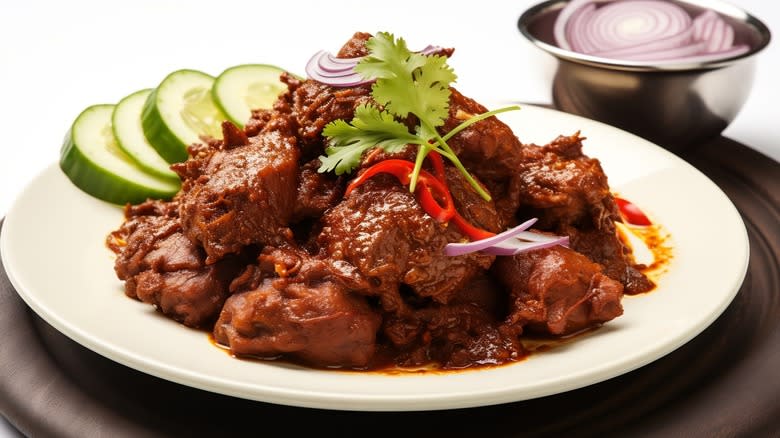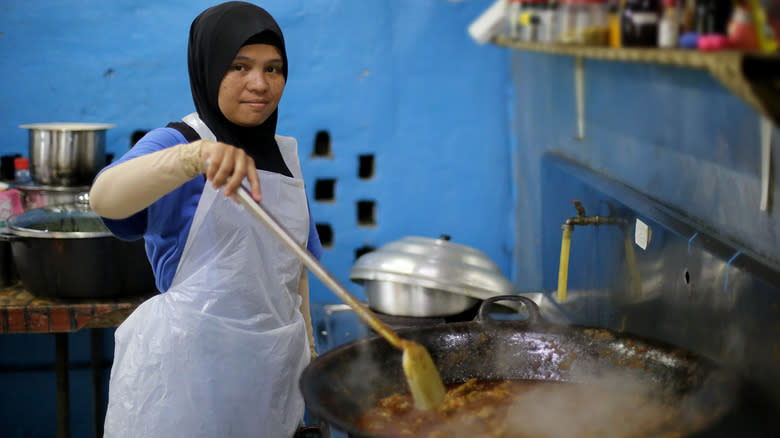The Origin Story Of Beef Rendang, Explained

Few cuisines incorporate wide-ranging flavors quite like Indonesian. The nation, comprised of over 17,500 islands, is influenced by culinary traditions from several hundred indigenous groups, as well as Middle Eastern, Indian, Chinese, and European cuisine. As a trading hub for centuries, spices have a special prominence and are used to craft many flavorful dishes.
Such aromatics coalesce into tender beef rendang, one of the country's most beloved foods. The dish consists of meat stewed in a coconut curry, flavored with ingredients like chilies, varying aromatic roots, spices, and more. While now enjoyed in Malaysia and Singapore in addition to Indonesia, its preparation traces specifically to the Minangkabau people of Western Sumatra.
The dish's name was derived from the cooking process, which gradually cooks down the meat to make it more palatable; the word "merandang" means "slowly." According to Singapore's National Library Board, originally, the Minangkabau people crafted the curry with tougher beef cuts and water buffalo, devising the dish to tenderize the meat. The preparation method stuck and spread to other regions of South East Asia.
Read more: 13 Underrated Cuts Of Meat You Should Be Grilling
Beef Rendang Was Created To Tenderize And Preserve Tough Meats

In addition to its tender texture, beef rendang also has another advantage: portability. The medley of ingredients employed in the dry curry offers long-lasting durability, with the meat edible for three days without any refrigeration. The Minangkabau people traveled frequently and would wrap meats in banana leaves for added portability. Such a nomadic nature carried the dish throughout Asia and absorbed a multitude of aromatics into its preparation.
Inhabitants in West Sumatra frequently planted new spices and participated in international trade, which explains rendang's impressive array of aromatics. The Portuguese brought different types of chiles to the region, while turmeric, ginger, and other spices came from Asian traders. Indian merchants who came to West Sumatra had an especially large influence on rendang. Their presence introduced new spices and likely inspired the coconut milk cooking method essential to the dish.
Over the centuries, beef rendang became an especially prominent dish in West Sumatran communities. The meat curry is enjoyed during celebrations, marriages, and other events. It's served to guests as a sign of appreciation and gifted in large quantities to families. Such a status -- combined with its delicious taste -- has turned it into one of Asia's most iconic dishes.
Read the original article on Tasting Table

